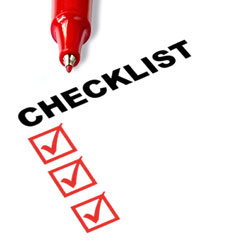DRIVER TIPS
Tips on driving and maintaining your vehicle:
-
 Follow the manufacturer’s recommended maintenance schedule. A poorly maintained vehicle can consume up to 50 percent more fuel and significantly increase emissions.
Follow the manufacturer’s recommended maintenance schedule. A poorly maintained vehicle can consume up to 50 percent more fuel and significantly increase emissions.
- Measure your tire pressure at least once a month when they are cold. Inflate tires to the recommended pressure, usually indicated on a sticker found on the car door, glove compartment or in the owner’s manual. Properly inflated tires will last longer, can save fuel and make your vehicle safer to drive.
- Use your air conditioning sparingly. Air conditioning can increase fuel consumption by 20 percent in city driving because of the extra load on the engine. Use your car’s flow-through ventilation or open a window. If you use your vehicle’s air conditioning, set the controls to a comfort level that allows the system to shut off the air conditioning once the interior of the vehicle is cooled.
- Drive at or below the posted maximum speed. Increasing your highway speed from 100 km/h to 120 km/h can increase fuel consumption by about 20 percent.
- Reduce unnecessary idling. Idling for more than 10 seconds burns more fuel than it takes to restart the engine.
- Don’t overuse your remote car starter. People with remote car starters tend to start their cars long before they are ready to drive. Remote starts result in unnecessary idling and wasted fuel. If you use a remote car starter, start your car shortly before you are ready to drive away.
- Check fluid levels once a month. Check engine oil, engine coolant, transmission fluid and power steering fluid as indicated in the owner’s manual, and change fluids according to the manufacturer’s recommendations in your owner’s manual. Also check around and under the car for fluid leaks.
- Check for wheel alignment and brake drag that can increase fuel consumption. Check for uneven tire wear. Make sure you have your vehicle serviced regularly.
- Remove unnecessary weight. If you add weight to your vehicle for extra traction in the winter months, remember to remove it when the snow melts. Unnecessary weight results in wasted fuel and unnecessary emissions.
- Make one long trip instead of several short trips. Taking short trips (less than 5 km) burns more fuel, regardless of the season, because the engine and drive-train don’t reach their most efficient operating temperature.

